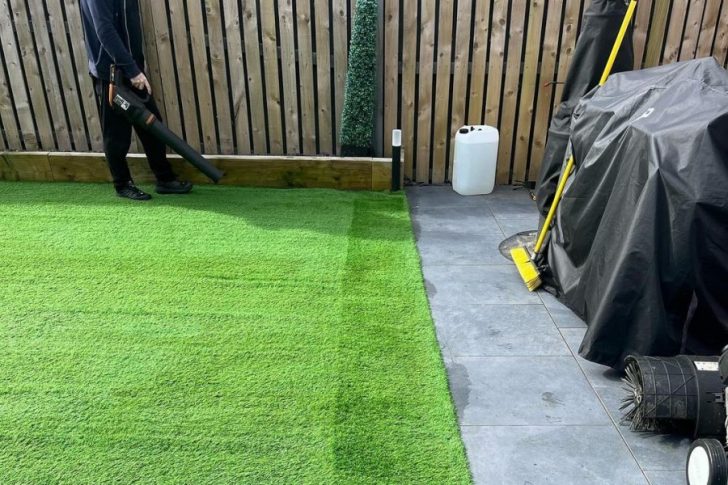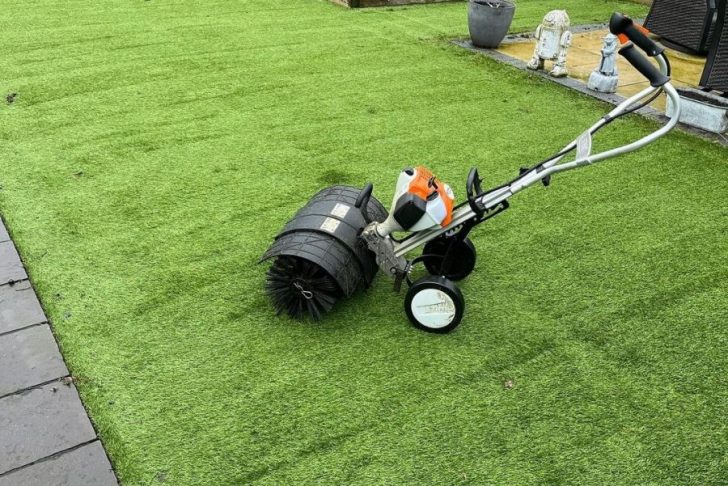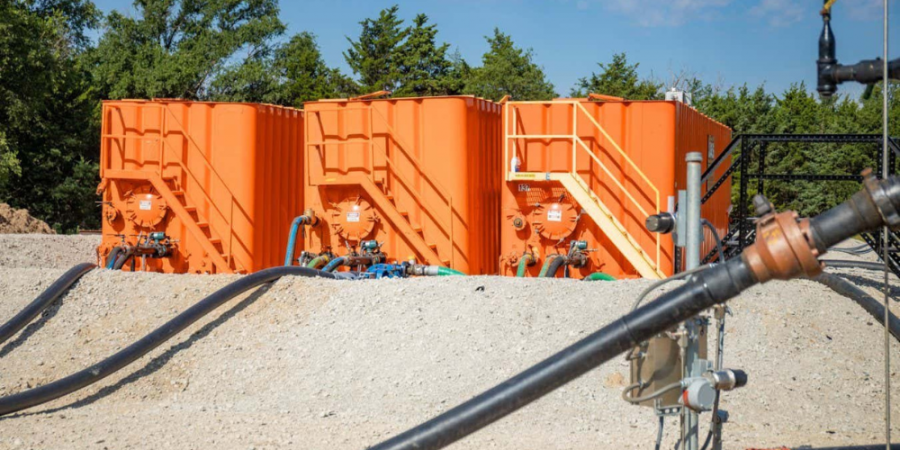Maintaining artificial grass requires regular cleaning and attention to detail. While artificial grass is low-maintenance compared to natural grass, it still needs proper care to keep it looking vibrant and fresh. Factors such as children, pets, and environmental elements can influence how often you need to clean your lawn. Knowing how to clean artificial grass effectively will help preserve its appearance and longevity.
How to Clean Artificial Grass: 6 Effective Tips
1. Removing Surface Dirt and Debris
Surface dirt and debris accumulate on artificial grass over time. Dust, leaves, and other small particles can make the grass look dull and unkempt if not regularly removed. The best tools for this task are a leaf blower or a stiff bristle push broom. Start by choosing a corner of your yard to gather all the debris, making it easier to collect and dispose of.

@dynamiccleaningcare | Instagram | Use a leaf blower to remove dust, leaves, and other small particles.
This step doesn’t deep clean the grass but prepares it for further maintenance. Regularly removing surface debris ensures that your lawn remains free of unwanted materials, reducing the risk of them decomposing and causing more significant cleaning challenges later.
2. Washing Down the Grass
Hosing down your artificial grass at least once a week is essential to remove any small debris, pollen, or dust that a broom or leaf blower might miss. This process also helps prevent the buildup of any materials that could lead to stains or odors. Ensure you thoroughly rinse the grass, focusing on areas where debris accumulates.
For those with pets, rinsing becomes even more critical. Regular washing helps to eliminate any residual odors from pet waste and keeps the lawn smelling fresh.
3. Using Cleaning Solutions
After the initial cleaning, it’s time to use a cleaning solution for a more thorough cleanse. Use a bio-friendly cleaner like Turf Renu or a mild detergent mixed with warm water. Spray the solution evenly across the lawn, ensuring every part of the grass gets covered. A container with a spray bottle nozzle or a hose attachment works best for this task.
For stubborn stains, a more concentrated cleaning solution may be necessary. For more challenging spots, apply an ammonia-based cleaner carefully to avoid damaging the grass. Always rinse the area thoroughly with water afterward to remove any cleaner residue.
4. Brushing and Maintaining the Grass Blades
Brushing your artificial grass is crucial to maintain its natural look. Use a soft-bristled brush to comb the grass against its natural grain, helping the blades stand upright. This step keeps your lawn looking fresh and prevents matting, which can occur over time due to foot traffic or weather conditions.

@dynamiccleaningcare | Instagram | Brushing your artificial grass is crucial to maintaining its natural look.
A mechanical power broom is also an excellent tool for more intensive brushing. This device helps to remove traffic wear, fix flat spots, and refresh the grass, making it appear as if it were just installed.
5. Handling Pet Waste
For those with pets, maintaining artificial grass requires some additional steps. Solid pet waste should be promptly removed with a plastic bag or pooper scooper. Afterward, rinse the area with water to clean any residue. Liquid waste, such as dog urine, can be addressed with a mixture of equal parts vinegar and water. This solution neutralizes odors and ensures that your lawn remains fresh and inviting.
6. Regular Maintenance and Precautions
Regular maintenance is key to prolonging the life of your artificial lawn. Weekly hosing and monthly deep cleaning will keep your grass in top condition. Additionally, avoid placing sharp or heavy objects on the lawn to prevent damage, and keep it clear of vehicles, as their weight can cause wear and tear. Protect your grass from open flames and reflective surfaces, which can cause the fibers to fuse or discolor.










